ZHCSHR8 March 2018 LMR23615-Q1
PRODUCTION DATA.
- 1 特性
- 2 应用
- 3 说明
- 4 修订历史记录
- 5 Pin Configuration and Functions
- 6 Specifications
-
7 Detailed Description
- 7.1 Overview
- 7.2 Functional Block Diagram
- 7.3
Feature Description
- 7.3.1 Fixed-Frequency Peak-Current-Mode Control
- 7.3.2 Adjustable Frequency
- 7.3.3 Adjustable Output Voltage
- 7.3.4 EN/SYNC
- 7.3.5 VCC, UVLO
- 7.3.6 Minimum ON-time, Minimum OFF-time and Frequency Foldback at Dropout Conditions
- 7.3.7 Internal Compensation and CFF
- 7.3.8 Bootstrap Voltage (BOOT)
- 7.3.9 Overcurrent and Short-Circuit Protection
- 7.3.10 Thermal Shutdown
- 7.4 Device Functional Modes
-
8 Application and Implementation
- 8.1 Application Information
- 8.2
Typical Applications
- 8.2.1 Design Requirements
- 8.2.2
Detailed Design Procedure
- 8.2.2.1 Custom Design With WEBENCH® Tools
- 8.2.2.2 Output Voltage Setpoint
- 8.2.2.3 Switching Frequency
- 8.2.2.4 Inductor Selection
- 8.2.2.5 Output Capacitor Selection
- 8.2.2.6 Feed-Forward Capacitor
- 8.2.2.7 Input Capacitor Selection
- 8.2.2.8 Bootstrap Capacitor Selection
- 8.2.2.9 VCC Capacitor Selection
- 8.2.2.10 Undervoltage Lockout Setpoint
- 8.2.3 Application Curves
- 9 Power Supply Recommendations
- 10Layout
- 11器件和文档支持
- 12机械、封装和可订购信息
6.8 Typical Characteristics
Unless otherwise specified the following conditions apply: VIN = 12 V, fSW = 1600 kHz, L = 4.7µH, COUT = 47 µF, TA = 25°C.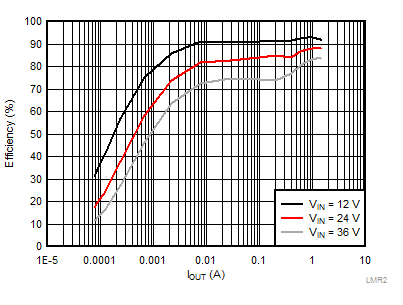
| fSW = 1000 kHz | VOUT = 5 V |
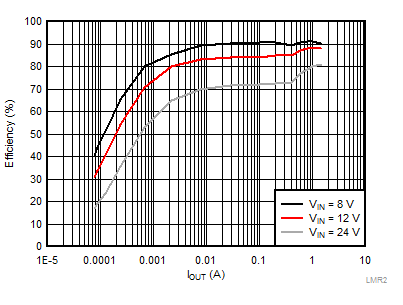
| fSW = 2200 kHz | VOUT = 5 V |
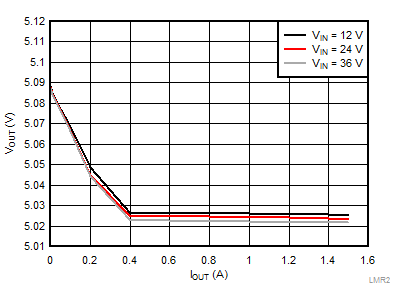
| fSW = 1000 kHz | VOUT = 5 V |
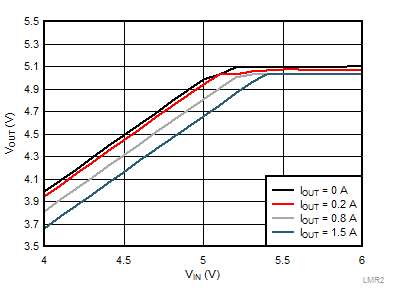
| fSW = 1000 kHz | VOUT = 5 V |
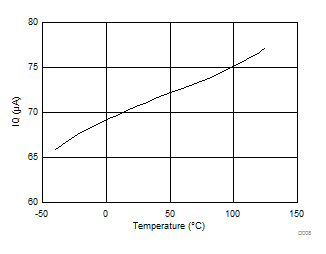
| VIN = 12 V | VFB = 1.1 V |
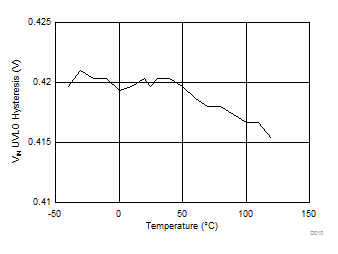
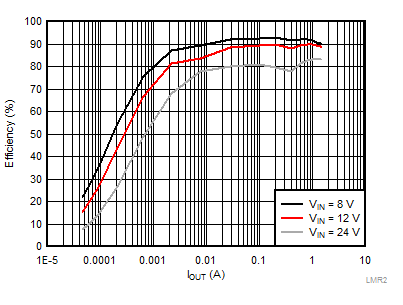
| fSW = 1000 kHz | VOUT = 3.3 V |
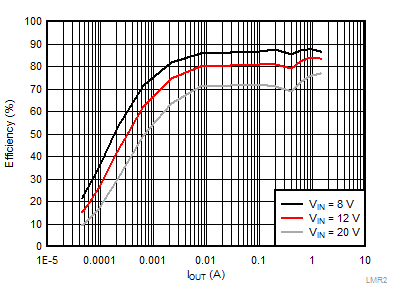
| fSW = 2200 kHz | VOUT = 3.3 V |
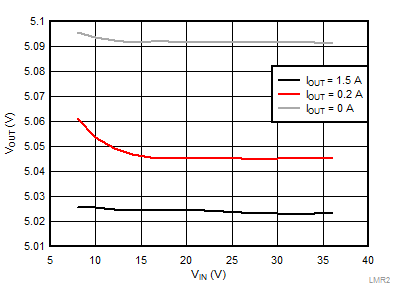
| fSW = 1000 kHz | VOUT = 5 V |
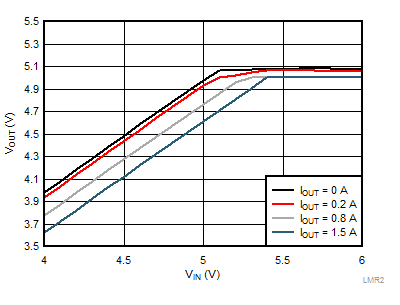
| fSW = 2200 kHz | VOUT = 5 V |
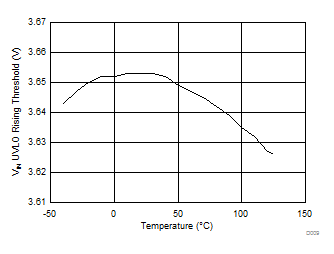
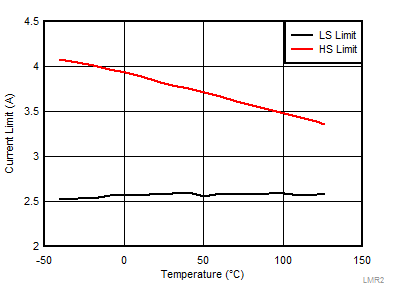
| VIN = 12 V |